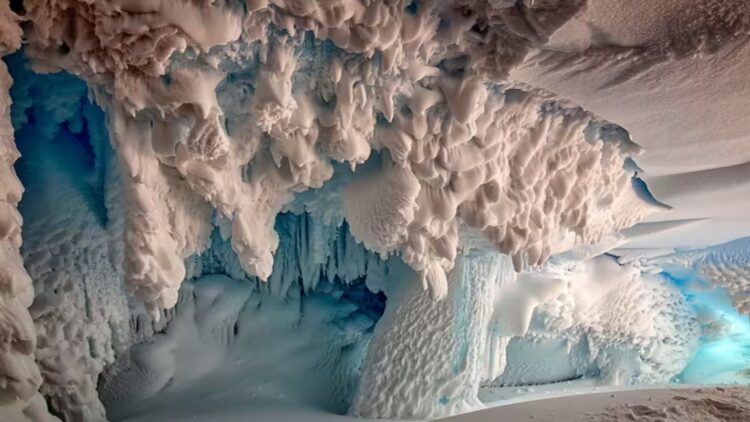A major discovery has recently been made in East Antarctica. The research was carried out by Stewart Jamieson of Durham University and uncovered a previously unknown Antarctic ice sheet that has been hidden for millions of years. Nature Communications published the study, which focused on the Aurora-Schmidt basins, located near the Denman and Totten glaciers. In these areas, ice-penetrating radar was used to carry out the research, which made it possible to uncover more information prior to the glaciation and fragmentation of Gondwana. In the face of climate change, this discovery provides a way to learn about the history of our planet. Read on to find out more.
The great discovery beneath the ice
Beneath kilometers of ice in East Antarctica, a team of geoscientists led by geophysicist Stewart Jamieson of Durham University has discovered a landscape beneath the ice shaped by rivers millions of years ago. The study was conducted in the Aurora-Schmidt basins, near the Denman and Totten glaciers, and was published in the journal Nature Communications. This finding reveals an ice-free past and helps to understand the evolution of the Antarctic ice sheet, which is key to anticipating the future of climate change.
An unknown landscape beneath the Antarctic ice
Deep in East Antarctica, an underground landscape of valleys, hills, and ancient river channels has been identified, which remained intact beneath the ice sheet for millions of years. The team used ice-penetrating radar and satellite data to map three elevated blocks separated by deep valleys, located approximately 350 km from the edge of the ice sheet.
Its preservation is exceptional: this terrain was formed between 14 and 34 million years ago, before massive glaciation, when ancient rivers flowed toward a coastline freed after the breakup of Gondwana. Even during warm phases in the past, the Antarctic ice sheet did not significantly erode the landscape, making this region a natural record of Earth’s climate history.
A key finding in times of global warming
This discovery is not only of geological value, but also of climatic importance. East Antarctica contains enough ice to raise sea levels by up to 60 meters if it melted completely.
The finding shows that some regions of the Antarctic ice sheet have remained stable during warm periods, while others have receded, exposing the underlying terrain. This allows scientists to identify vulnerable areas and create more accurate models of ice evolution and its possible responses to climate change.
Currently, the Earth is approaching temperatures similar to those between 34 and 14 million years ago, between 3 and 7°C warmer than today. Understanding how the ice sheet reacted then is critical to anticipating future global warming scenarios.
Mapping the Antarctic subsoil: a long-term challenge
Spite of progress in this research, much of the subsoil of East Antarctica remains unknown.
“We know less about this terrain than we do about the surface of Mars,” says the Durham team.
The next step is to continue mapping the region with ice-penetrating radar, collecting data that will allow us to reconstruct the evolution of the Antarctic ice sheet. Each new image of the subsoil is a window into the past that alerts us to possible future transformations. This information is essential for improving climate change models and understanding how ice, landscape, and climate interact.
Discovering a landscape sculpted by ancient rivers beneath East Antarctica offers unique insights into the planet’s past and future. In a rapidly warming world, studying the way the Antarctic ice sheet reacted to high temperatures is vital to managing the present and preparing for the next changes in time. Ice holds valuable memories, and today, thanks to science, it is beginning to reveal them.

